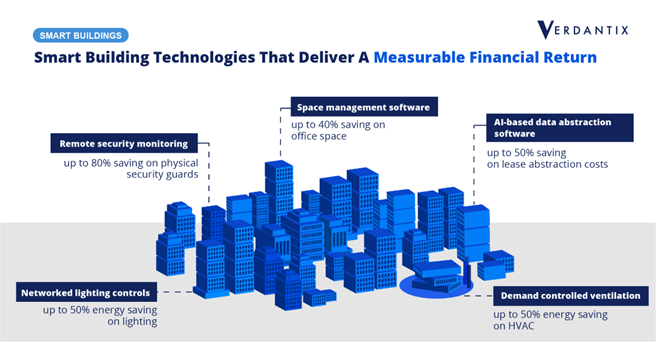As technology continues to evolve, so do our workplaces. Today, a smart workplace is viewed as a harmonious environment. It’s where digital technology, interconnected devices, and data analytics work together to boost efficiency and productivity. A significant benefit and driver of smart workplaces is cost reduction. Let’s explore five ways technology can help achieve this.
1. Space Management for Efficiency
A smart workplace is defined by the technology it houses and how people interact with their environment or space. Effective space usage management becomes crucial to maximize the potential of the workplace.
By employing space management tools, workplaces can optimize the organization of spaces and ensure the efficient placement of employees. These tools aid in identifying underutilized areas and preventing space wastage. Businesses can significantly reduce unnecessary real estate expenses (up to 40% savings on office space) and enhance productivity by efficiently managing and utilizing space.
2. Simplifying Building and Asset Care
Every business makes significant investments in its assets. Mismanagement or negligence of these assets can lead to increased costs or time wastage. In traditional setups, tracking data across various functions is often a confusing and inefficient process.
Smart workplaces integrate all data from diverse areas like maintenance, utilities, and building systems into a single platform. These connected platforms not only simplify asset management but also allow for timely scheduled maintenance. With a systematic approach to asset care, businesses can significantly reduce long-term repair costs, increase equipment life, and minimize downtime. All these result in substantial cost savings.
3. Promoting a Happier Work Environment
Workplace happiness and productivity share a direct correlation. Studies indicate that satisfied employees are 13% more productive. Smart workplaces capitalize on this by creating an environment that boosts employee satisfaction and productivity.
Integrated Workplace Management Systems (IWMS) utilize technologies such as the Internet of Things (IoT), Artificial Intelligence (AI), and data analytics to maintain optimal workspace conditions, including air quality, lighting, and temperature. By providing a healthier and more comfortable workspace, businesses can reduce sick leaves, increase job satisfaction, and boost productivity.
4. Cutting Down on Energy Bills
Operational energy consumption in buildings accounts for about 35% of total energy use, forming a significant part of your budget. Without an efficient system, you could end up overspending.
Smart technology solutions such as automated building controls and demand-controlled ventilation offer a solution. They can optimize energy use based on predictive analytics, leading to considerable energy savings. Optimizing asset runtimes and adjusting heating and air volume based on sensor inputs can result in up to a 20% annual energy saving and a 50% reduction in HVAC energy costs.
5. The Power of Predictive Analytics
Predictive analytics is transforming real estate and building management. Businesses that do not leverage their data efficiently might be missing out on substantial cost-saving opportunities.
Predictive analytics uses historical and real-time data to forecast trends, predict equipment issues, and plan space usage. On average, businesses utilizing predictive analytics report a portfolio cost reduction of 5-15%. By predicting future needs, businesses can plan better, leading to fewer unexpected expenses and more cost-effective operations.

Smart workplaces strategically leverage technology to enhance savings and streamline processes. Nuvolo Connected Workplace offers a unified platform for achieving these objectives throughout the entire asset lifecycle. Are you ready to increase your savings? Reach out for more information.